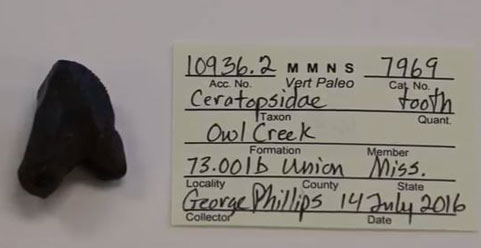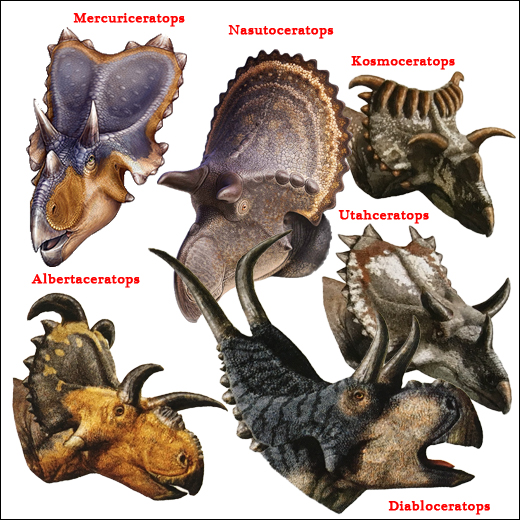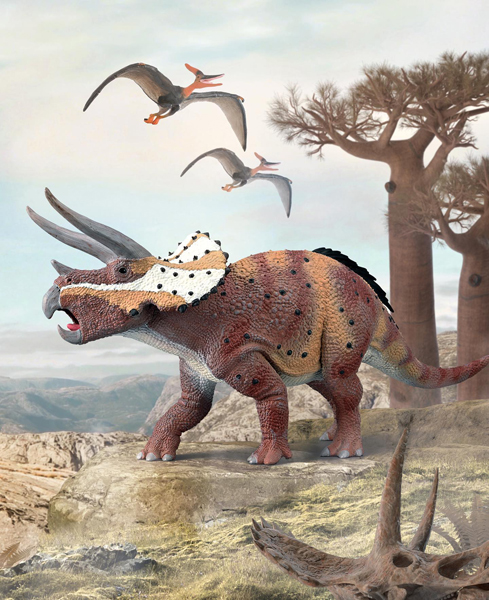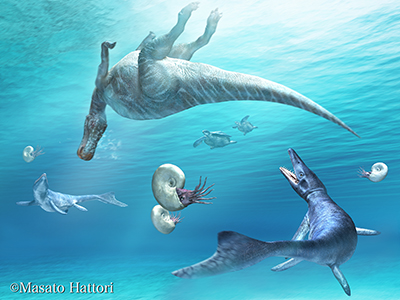Amazing Ceratopsid Tooth Paper Published (Part 2)
Owl Creek Ceratopsid Tooth and Palaeoenvironment Implications
Yesterday, team members at Everything Dinosaur published an article on the discovery of a single fossil ceratopsid tooth. It had been found in Union County (Mississippi). This discovery, the first evidence of a dinosaur from the Owl Creek Formation, has implications for the way in which palaeontologists perceive the ecosystems that existed on the ancient landmasses of Laramidia and Appalachia.
Museum Specimen 7969- The Ceratopsid Tooth
Picture credit: Mississippi Museum of Natural Science (MDWFP)
To read yesterday’s article: Ceratopsid Tooth Paper Published (Part 1).
Why So Few Horned Dinosaur Fossils Found in Marine Sediments?
Palaeontologists know that during the latter stages of the Cretaceous, there were many different types of horned dinosaur (ceratopsian). Lots of fossil evidence has been discovered in western North America and a myriad of different forms have been described, particularly over the last ten years or so. The likes of Triceratops may have first been described back in the late 1880s but so many different horned dinosaur genera have been established in recently times, that numerous vertebrate palaeontologists refer to the last decade as the “Golden Age of Horned Dinosaur Discoveries”.
New Ceratopsian Faces Since 2007
Picture credit: Everything Dinosaur with artwork from Julius Csotonyi, Danielle Dufault and the Canadian Museum of Natural History/Andrey Atuchin
Despite all these horned dinosaur fossil discoveries, the Owl Creek Formation tooth, is one of only a handful of North American ceratopsian fossils which have been found associated with marine strata. The question is why?
Duck-billed Dinosaur Fossils in Marine Sediments
Compared to other types of Late Cretaceous dinosaur – ceratopsids, theropods, ankylosaurids, et al, hadrosaur fossils are the most common dinosaur fossils to be found in marine rocks laid down towards the end of the Cretaceous. Duck-billed dinosaur fossils in marine sediments, are hardly what you would call abundant, but in relation to other large, obviously terrestrial dinosaurs, hadrosaur fossils are more numerous in those rocks associated with having been laid down under the sea.
Although the fossil record shows a degree of bias, dinosaurs such as some of the smaller theropods and the Pachycephalosaurs may be under-represented for example, this still does not explain why, compared to the hadrosaurs, the almost equally specious and abundant horned dinosaurs don’t show up in marine deposits. Ceratopsians may have preferred slightly different habitats than the hadrosaurs. Research undertaken in 2010 (Eberth), suggested that most of the horned dinosaur fossil remains were associated with lake, alluvial or coastal plain habitats, at least amongst the Ceratopsidae family.
Ceratopsians Such as Triceratops May Have Preferred Different Habitats Compared to Hadrosaurs
The picture (above) shows at CollectA Deluxe Triceratops model.
To view the CollectA Deluxe range: CollectA Deluxe/Supreme Figures.
The alluvial, low-lying wetland areas are strongly associated with river channels and these specific areas can be divided into two distinct parts.
- The riparian influenced part – the river and the river/channel margins.
- The floodplain – areas not adjacent to the river or the channel margins but flooded by the river when the river burst its banks.
Horned Dinosaurs Associated with Floodplains
Put into simple terms, dinosaurs such as Triceratops have left fossils associated with floodplain (muddy) deposits, whereas, duck-billed dinosaurs such as Edmontosaurus fossils are more associated with fluviatile (sandy) deposits.
If transport along river channels are the most common cause of “bloat and float” carcases, then, the lack of horned dinosaur fossils in marine sediments could be explained by ceratopsids, preferring to live on those parts of the floodplain, not very near to the river. They may have had a preference for habitats outside of the riparian zones.
A Hadrosaur Corpse Floating Out to Sea (Bloat and Float Scenario)
Picture credit: Masato Hattori
Visit the website of Everything Dinosaur: Everything Dinosaur.





